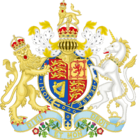Suspensory Act 1914 facts for kids
| Act of Parliament | |

|
|
| Long title | An Act to suspend the operation of the Government of Ireland Act, 1914, and the Welsh Church Act, 1914. |
|---|---|
| Citation | 4 & 5 Geo. 5. c. 88 |
| Territorial extent | |
| Dates | |
| Royal assent | 18 September 1914 |
| Commencement | 18 September 1914 |
| Other legislation | |
| Repealed by | Statute Law Revision Act 1927 |
| Relates to |
|
|
Status: Repealed
|
|
| Text of statute as originally enacted | |
The Suspensory Act 1914 was a special law passed by the Parliament of the United Kingdom. Its main job was to put two other important laws on hold. These laws were the Welsh Church Act 1914 and the Government of Ireland Act 1914. The Suspensory Act became law on 18 September 1914, the very same day as the two laws it paused.
Contents
Why Was the Suspensory Act Needed?
Setting the Scene in 1914
In the early 1900s, the Liberal government, led by H. H. Asquith, wanted to make some big changes. Two of their main goals were "disestablishment" in Wales and "home rule" for Ireland. These ideas were very controversial.
What is Disestablishment?
"Disestablishment" meant separating the Church of England from the government in Wales. Before this, the Church of England was the official church there. This change would make the church independent from the state.
What is Home Rule?
"Home rule" for Ireland meant giving Ireland its own parliament. This new parliament would make decisions about local Irish matters. At the time, Ireland was fully governed by the UK Parliament. Many Irish people wanted more control over their own affairs.
Parliamentary Challenges
Both of these ideas faced strong opposition. The House of Lords, which is part of the UK Parliament, did not agree with them. However, a law called the Parliament Act 1911 had been passed. This act limited the power of the House of Lords. It meant the government could eventually pass laws even if the House of Lords disagreed. By summer 1914, it looked like both the Welsh Church Act and the Government of Ireland Act would soon become law.
The Start of World War I
Then, in August 1914, World War I began. Britain declared war on Germany. Because of the war, the government and the main opposition party, the Conservatives, agreed to a "political truce." This meant they would try to work together during the war.
However, Prime Minister Asquith decided to go ahead with the two controversial bills. He presented them to King George V. But he also presented a new bill, the Suspensory Act. This new act would pause the other two laws. The leader of the Conservatives, Bonar Law, was very unhappy. He led his party out of the House of Commons in protest. Despite this, all three bills received the King's approval on 18 September 1914.
How the Suspensory Act Worked
The Suspensory Act was a short law. It said that "no steps shall be taken" to start the Government of Ireland Act. It also said that the date for Welsh disestablishment would be put off. Both acts were paused until 18 September 1915. If the war was still going on then, the government could push back the start dates even further.
Postponing the Acts
The war did continue, so the government used the Suspensory Act to keep pausing the other laws.
- On 14 September 1915, the Government of Ireland Act was paused for another six months.
- Welsh disestablishment was postponed until the very end of the war.
The Irish Act was paused many more times, every six months. This continued until the Government of Ireland Act 1920 was passed. This new act was supposed to replace the 1914 Home Rule Act. However, the 1920 Act was also never fully put into action. This was due to the Irish War of Independence. In the end, most of Ireland became independent from the UK as the Irish Free State. Home rule was only set up in Northern Ireland.
Welsh disestablishment was also postponed again by another law in 1919. Finally, on 31 March 1920, the Church of England was disestablished in Wales.

